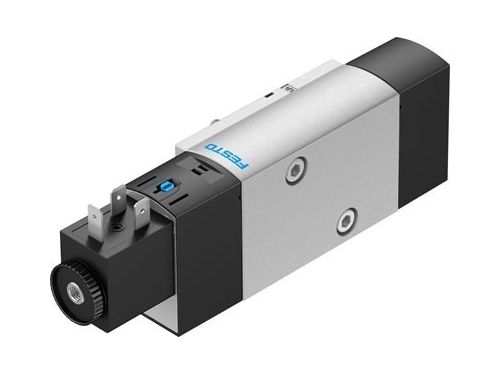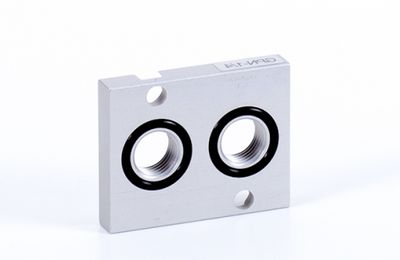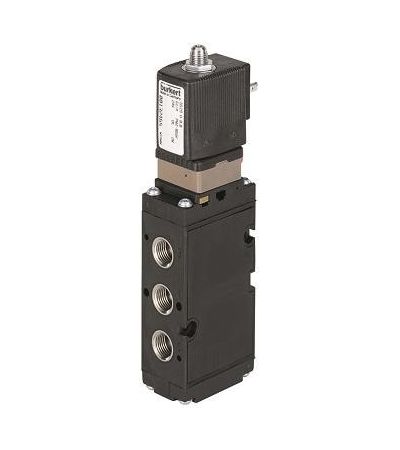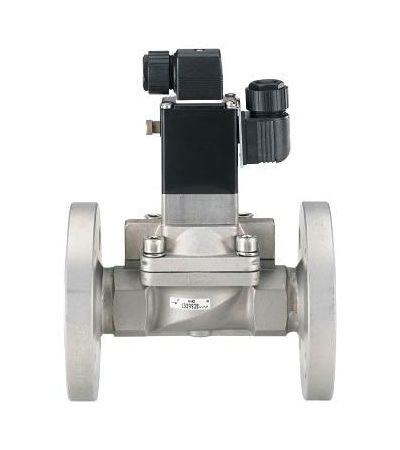What is the Namur Solenoid Valve?
25.08.2022
The Namur solenoid valve is suitable for use with double or single-acting rotary cylinders in pneumatic control systems. Namur solenoid valve with electromagnetic control is designed to be assembled directly on the cylinder body or with the help of subwoofers. The valve can be used with dry or lubricated air.
Namur mount solenoid valves are connected in a two-wire circuit and change their resistance depending on the state (worked/did not work). In fact, these are discrete sensors with a current output.
In the active state, the current flowing through the sensor must not exceed 1.2mA at a voltage of 8.2V. In inactive - the current must be greater than 2.1mA.
The low current and 8.2V voltage are used because the Namur standard was developed for use in hazardous areas.
The solenoid valve Namur is connected to special amplifiers (barriers) that convert the current signal into a traditional discrete signal using relay or transistor outputs. Also, many barriers allow you to control an open or short circuit in the sensor circuit.
Similar sensors are manufactured by many companies. For example, Burkert is a Namur solenoid valve manufacturer.
What is the NAMUR Connection?
When conventional contacts (dry contacts) are used in signaling devices, the problem arises of the impossibility of logical recognition of typical line faults - open and short circuits. The use of NAMUR contacts and a NAMUR signal input (receiver) solves this problem in accordance with the IEC60947-5-6 standard.
The NAMUR input supports a 2-wire connection of both conventional contacts (mechanical or their electronic equivalents - Opto-relays) and a special NAMUR switching device (conventional contacts with an additional pair of resistors, or a switching amplifier acting as an electronic contact, including one with galvanic isolation ).
If the NAMUR pin is a switching amplifier, then when powered by the line it performs the same function as the NAMUR pin shown in the diagram above using a pair of resistors.
If a normal contact is connected to the Namur input, only two states will be recognized with a current through the closed contact of 8.2 mA and a current of 0 mA through the open.
What are the Two Main Types of Solenoid Valves?
There are many different types of solenoid valves available, but direct acting and pilot operated valves are the two main categories. Let's look at them in more detail.
Direct-acting valves
The solenoids in direct-acting valves open the valve with a direct-acting magnet, hence the name. The coil pushes and pulls the shaft and causes the valve seat to move. In the absence of electric current, the coil of the spring returns to its original position. Direct-acting valves require full power to operate the valve. Whether this position is normally open or normally closed depends on the application.
In a normally closed energized valve, the inlet pressure is released when the solenoid coil is retracted, thereby allowing fluid to pass through the outlet. The solenoid coil is usually larger in a direct-acting valve compared to a pilot-operated valve.
Pilot-operated valves
Pilot-operated valves use fluid pressure in the line to open the valve. One of the advantages is the possibility of using a smaller coil and lower cost. Although pilot-operated valves use less electrical energy, pressure is required to operate the valve.
What are the Three Types of Solenoids?
There are three types of solenoids and now we will talk about them in detail.
Normally closed valve
Normally closed valves are valves that, when the control signal is removed, close, blocking the flow. For example, in the case of a gas flow regulator with a normally closed solenoid control valve, when the power to the regulator is turned off, the valve will close under the force of the internal spring. When power is restored to the device, the valve will open to the value set before shutdown.
The normally closed valve is most commonly used in:
- water disposal systems;
- irrigation systems;
- septic tank;
- gas supply systems;
- air conditioning systems.
Normally open valve
A normally open valve is a variant of a shut-off valve, in which, in the absence of voltage on the induction coil, the locking element is in the open position and the movement of the working medium is ensured. At the moment the voltage is applied, the system is transferred to the closed position, which remains as long as the voltage is maintained on the coil.
This type of valve is used in:
- heating systems;
- water supply and water treatment systems;
- systems for supplying reagents and other media in the food industry with automatic control;
- the energy sector.
Bistable valve
The bistable valve has two stable positions: "Open" and "Closed". Switching between them is carried out sequentially by applying a short pulse to the valve coil. A feature of the control is the need to supply pulses of variable polarity, so bistable valves operate only from DC sources. The coil does not need to be energized to hold the open or closed position. Structurally, bistable pulse valves are designed as pilot valves, with minimum pressure drop required.
Eltra Trade offers a large selection of solenoid valves from leading companies like Bürkert, Norgren and more. Our expert managers are always ready to assist with selection and answer questions. We provide fast worldwide delivery and the best prices!